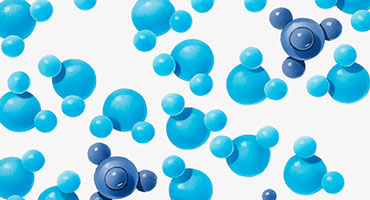Spectroscopy and atmospheric chemistry
Molecular spectroscopy
 The structure of molecules and the way they interact with each other is fundamental in chemistry. Critical challenges include understanding how interactions between molecules affect reactions and how the presence of additional molecules, such as solvent molecules, determine chemical outcomes. What we do is bring a suite of sophisticated techniques to try to unravel problems such as these. Key to this is being able to probe right down to the level of single molecules, and to do this we use sensitive laser spectroscopy techniques. These can be combined with methods for trapping and encasing one or more molecules, often at very low temperature, such as by using superfluid liquid helium nanodroplets.
The structure of molecules and the way they interact with each other is fundamental in chemistry. Critical challenges include understanding how interactions between molecules affect reactions and how the presence of additional molecules, such as solvent molecules, determine chemical outcomes. What we do is bring a suite of sophisticated techniques to try to unravel problems such as these. Key to this is being able to probe right down to the level of single molecules, and to do this we use sensitive laser spectroscopy techniques. These can be combined with methods for trapping and encasing one or more molecules, often at very low temperature, such as by using superfluid liquid helium nanodroplets.
We have used these approaches to explore a wide range of chemical problems including hydrogen bonding, solute-solvent interactions, and identifying molecular ions thought to participate in organic reaction mechanisms.
Selected publications
- “Dimers of Acetic Acid in Helium Nanodroplets”, J. A. Davies, M W. D. Hanson-Heine, N A. Besley, A. Y. Shirley, J. Trowers, S. Yang, A. M. Ellis, Phys. Chem. Chem. Phys. 121, 13950-13958 (2019).
- “IR Spectroscopy of the Cesium Iodide-Water Complex”, J. A. Davies, M. Mugglestone, S. Yang, A. M. Ellis, J. Phys. Chem. A., submitted for publication.
- “Probing Elusive Cations: Infrared Spectroscopy of Protonated Acetic Acid”, J. A. Davies, N. A. Besley, S. Yang, A. M. Ellis, J. Phys. Chem. Lett. 10, 2108-2112 (2019).